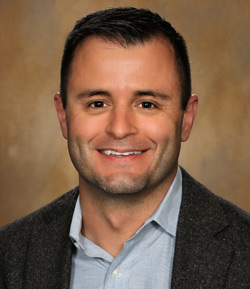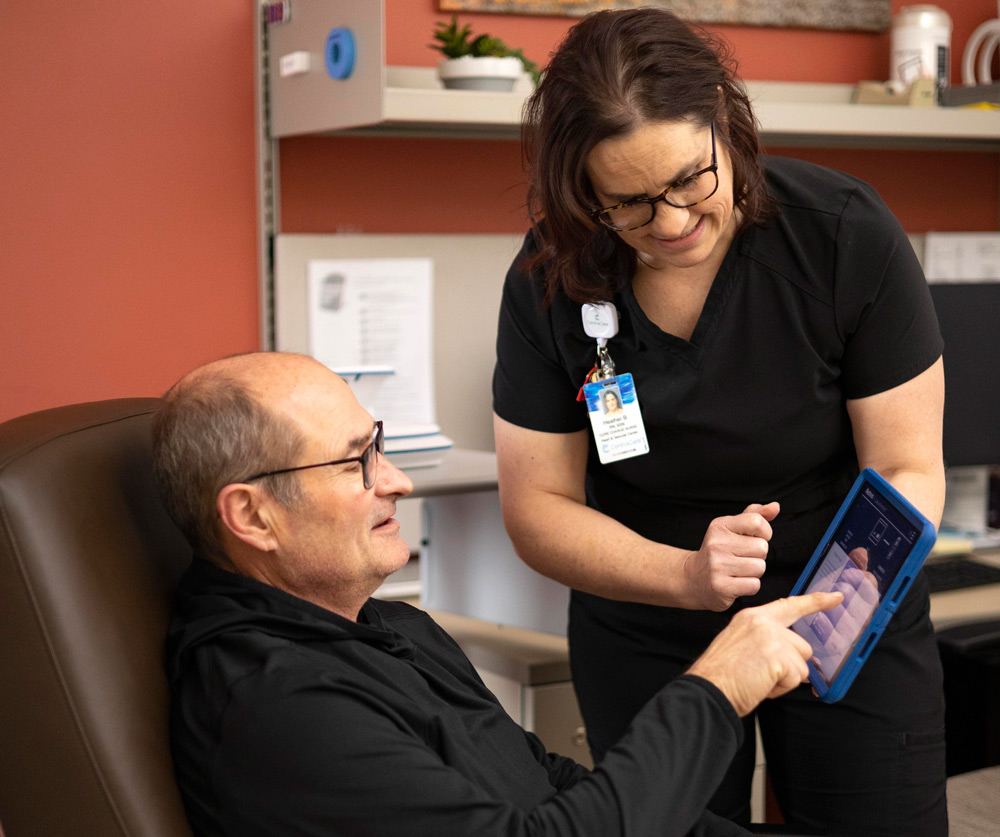Structural Heart Disease, AFib & Heart Failure: A Q&A With Cardiologist Stephen Kidd
Dr. Stephen Kidd, cardiologist with the CentraCare Heart and Vascular Center, spoke with WJON’s Jay Caldwell about structural heart disease, atrial fibrillation (AFib) and heart failure. The interview below was edited for length and clarity.
Q: What is AFib and how can having structural heart disease be something that would be in conjunction with that?
Dr. Stephen Kidd: AFib is an irregular heartbeat. It's very common and it happens more so as we age, along with most conditions of the heart.
We don’t have a great understanding of why AFib happens, but we have developed many techniques for treating it, keeping people out of AFib and preventing any problems thereafter. It’s not, to the best we can tell, inherited. Things that may predispose people to AFib are things like being overweight, obstructive sleep apnea, heavy alcohol use and drug use, but, for the most part, there's not a lot that people can do to prevent it. My first visit with anyone with AFib, I reassure them that they’re going to be OK. People live with this; they don't die from this.
In “atrial fibrillation,” the “atrial” or “atrium” is an upper chamber of the heart that collects the blood from the lungs after it has been given oxygen. The blood waits in the atrium until pumped through your body. “Fibrillation” means to vibrate. In this case, blood will pool when there's no vibration or contraction, and when blood pools, it does the same thing in your body as it does when cutting yourself — a clot forms. If a clot forms in the heart, the first place it can go after that is to your brain. For this reason, there is a risk of stroke with AFib. People are put on blood thinners to reduce this risk.

Now how this correlates with structural heart disease is, there are two procedures, but the oldest and most studied, is called WATCHMAN. With this procedure, we go to that chamber of the heart where about 95% of those clots form, and we put what looks like a parachute device into that part of the heart. Over time, the heart wall grows over that parachute. Within a matter of months, that part of the heart is completely excluded from circulation, such that blood does not go in or, more importantly, out of that part of the heart. This prevents stroke and allows people to get off blood thinners even if you still have AFib.
WATCHMAN has been a revolutionary treatment for people especially in Minnesota. When I worked in Chicago, where the sharpest things people used were butter knives, WATCHMAN was not a highly used procedure. But up here where people like to hunt, fish and work with their hands, this is a very nice way for people to continue their lifestyle and minimize medications but also be protected from stroke. So, between the convenience of blood thinners, and a lot of people tolerate blood thinners just fine, we have two really good treatments to protect people from strokes due to AFib.
Q: Does the parachute-like device from the WATCHMAN procedure always stay there for the person with AFib?
Dr. Stephen Kidd: The device does stay in place, but it doesn't get people off blood thinners immediately. The device frame has a coating, which is designed to help the lining of the heart grow over it. Say a surgeon puts in a new heart valve. Your body has cells that will begin to form a smooth layer over the valve, almost like internal skin. In about three to six months, we will do a CAT scan, and we look to see if the internal skin has grown over that part of the heart. Once we know that skin is in place and no clots can leave that part of the heart, a person can get off blood thinners.
Q: How is structural heart disease different than congestive heart disease?
Dr. Stephen Kidd: Congestive heart failure generally means someone has fluid retention, where fluid backs up in the lungs or legs, and individuals don't breathe as well when they exercise. There are two major types. One is where the heart muscle is weak and doesn't contract or squeeze very well and the pump function isn't normal. The other is where the heart muscle gets very stiff and less relaxed. We consider congestive heart disease a heart muscle problem. You could think of heart failure as a motor issue. Structural heart disease would be more of a heart valve issue, but it can still be responsible for causing congestive heart failure, shortness of breath, weakness of the muscle or retention of fluid. Some of the symptoms may be the same, and often if people have congestive heart failure from a valve problem, we replace the valve, and the congestive heart failure goes away, if not immediately, within a matter of months. All in all, they are two separate issues, but certainly all parts of an engine need to be working well for the engine to work.
Read Structural Heart Disease: A Q&A With Cardiologist Stephen Kidd.
